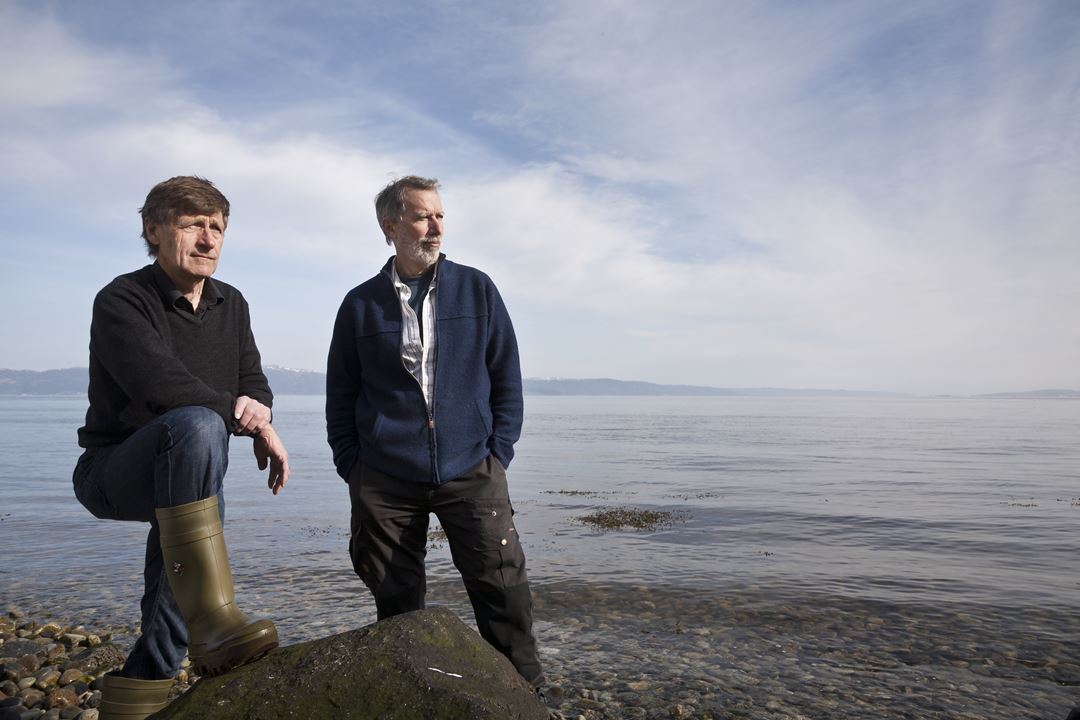By Åse Dragland
The current model shows how coastal flow conditions and shared water masses pay no heed to municipalities and administrative boundaries. But it also shows more detailed results regarding flow conditions, temperature, and the spread of infection between different areas.
Strong interest
For many years now, Dag Slagstad and his team of 5–6 researchers at SINTEF Fisheries and Aquaculture have been using their models to study ecosystems and the effects of climate.
Based on atmospheric data from the German Max Planck Research Institute, they can predict events such as a drop in pH values in the Barents Sea, or the fact that one of the consequences of an increase in dissolved CO2 in the ocean will be to make life more difficult for certain types of shellfish.
"Now that we are starting to develop more high-resolution models and can resolve our analyses down to specific location scale, we are seeing an interest from several parties – including the aquaculture industry", relates Slagstad.
Useful knowledge
136 locations ranging from the south to the north of Nordland are registered in the project to chart ocean currents in Nordland. Now they have all obtained knowledge about their own location and the infection network formed by other locations.
"The benefits from this project will be numerous, but some of the most important will be improved knowledge about shared water masses and flow conditions. This could help us to be better prepared to deal with shipwrecks, pollution, fish diseases and algal blooms", says Slagstad.
Will the threat pass us by?
The researchers have now been focusing on the Norwegian coast from Stadt as far up as Troms, and are carrying out a major project for the county authorities. Slagstad shows on his PC how the coastal areas are divided into a grid, and that the modelled areas can vary from close-ups of only a few hundred metres to overview images up to twenty square kilometres in area.
"The aquaculture industry is interested in finding out how the salmon louse and viruses can spread. For example, will currents and wind mean that lice from adjacent farms will damage my facility?"
Dag Slagstad brings up a chart of the Trøndelag coast. All the fish farming facilities around the islands of Hitra and Frøya have been plotted onto this chart as large, white dots. A simulated infection occurs in one of the installations, which is marked in red, and on the screen we see how the colour spreads with the ocean currents. Suddenly, the facility to the east has become 'invaded', and things aren't looking good for facility number two either, just across the strait.
Powerful programs
It is not that easy to understand what the models are, and what happens when the researchers feed in numbers and weather and wind data. But the SINTEF researchers demystify it all, and explain that the models are nothing more than powerful calculation programs that display ocean currents.
"The measurement data are enormously important. The more measurements we feed in, the better the information that comes out", says Dag Slagstad. "Forecasts, or what we calculate will happen in the future, have to be constantly corrected with new measurements. This enables us to keep the models continuously updated to reflect reality.
In order to ensure that the model results are used effectively, Helgeland Havbruksstasjon, NCE Aquaculture and Sintef Fisheries and Aquaculture are all undergoing training in the use of the models via the project in Bodø.
FACTS: The model has been developed by Sintef, and has been established through a partnership project with the Norwegian Seafood Federation (FHL), Nordnorsk havbrukslag (Northern Norwegian fish farming association), Nordland county authorities and Helgeland Havbruksstasjon which was responsible for project management.
By Åse Dragland

